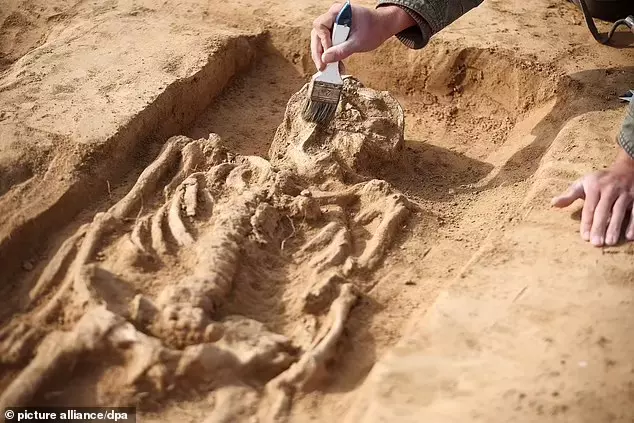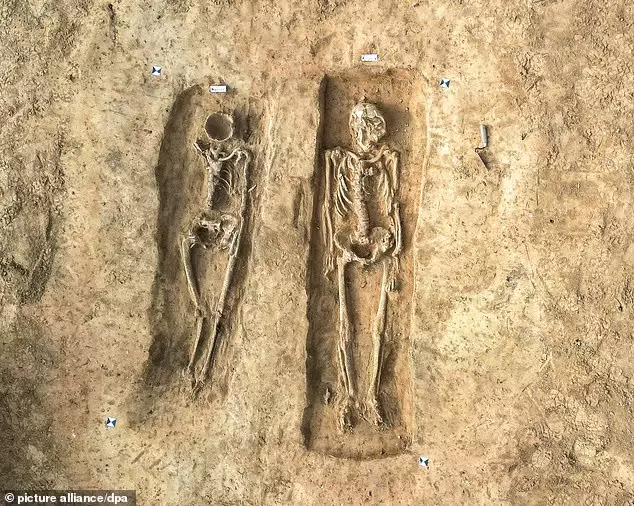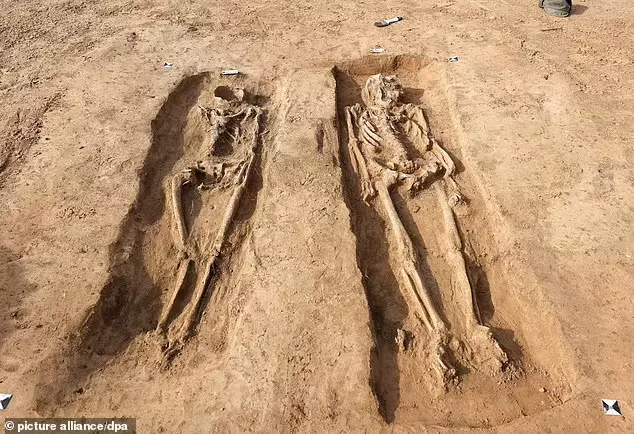
Unveiling the Past: Archaeologists Discover Noble Woman Buried Beside ‘Husband’ 1,000 Years Ago, with the Top of Her Face Hollowed Out.
Archaeologists have been left puzzled after discovering the skeleton of a woman buried beside her assumed husband… with the top of her head missing.
The female skeleton, which measured at just over 5 ft tall, was found lying on her back next to her husband’s skeleton with her facial bones missing.
His skeleton, which was slightly taller, still had identifiable facial bones.

Archaeologists are still trying to work out what exactly happened to the long-dead couple, who were found in the former royal palace of Helfta in Eisleben, in the German state of Saxony.
It is not currently known if they died together or separately, or why the wife’s facial bones are missing.
The pair are believed to have been extremely wealthy when they were alive.

Archaeologists told German newspaper Bild that it was likely the husband was a dignitary of some kind.
‘Among other things, they found a knife, a belt set and the fittings for a so-called official staff, such as those carried by generals, on him. This is considered a dignitary’s accoutrement’, archaeologist Felix Biermann from the Saxony-Anhalt State Office for Monument Preservation and Archeology said.
But the scientific team said that the woman was unusually buried with no possessions.
Biermann said she may have deliberately wished not to be buried with any possessions.
‘The fact that there was nothing with her is very unusual. Maybe she was already Christian, but the man was even more traditional. In Christianity, these kinds of additions were avoided.’

The couple’s bones are now being examined in a laboratory to determine how they died.
In 2020, German researchers found the 4,500-year-old remains of a woman buried in a simple but ‘lovingly’ made gravesite.
The discovery was made by Philipp Roskoschinski and a team of archeologists from the firm Archaeros while on a dig at Uckermark, a rural county around 60 miles northeast of Berlin.
Though the gravesite itself was humble, the posture and position of the woman indicate a possible connection with other ancient burial practices seen as far away as Scotland.




